Exploring Maternal Health and Community Resilience in Rural Kenya
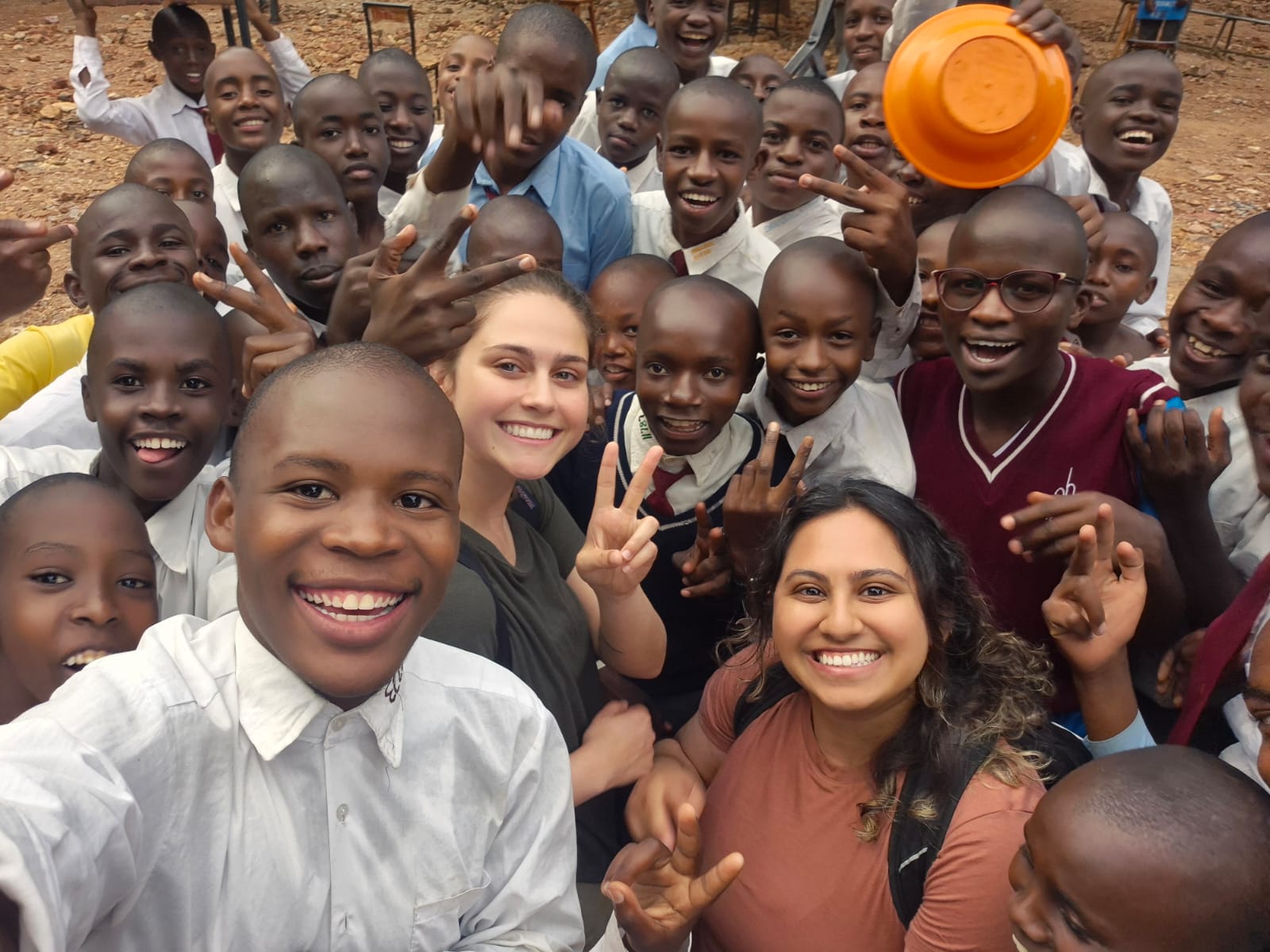
This summer, I had the incredible opportunity to travel to Kisii, Kenya, where I completed my public health practicum with the Kisii Konya Oroiboro Project (KIKOP).
.jpg)
My journey began on a sunny morning during the summer of 2024 as I stepped off the plane in Kenya, ready to begin my public health practicum with the Kisii Konya Oroiboro Project (KIKOP). Serving as a maternal and child health intern, I was instantly immersed in a community-driven project aimed at improving maternal, child, and family health outcomes. On my first day at the KIKOP office, which doubled as a bustling community space and teen center, neighbors greeted us warmly and shared their freshly picked guava and avocado. The fruits were delicious! After going inside, I met teenagers gathered to play pool and listen to music. They come to the office a couple of times a week to get health education and engage in community events. They taught us to introduce ourselves in the local language, Ekegusii. I was honored with the local name "Moraa," meaning "woman of beauty."
Bwakire! Nche igonkorokwa Shriti Moraa!
.avif)
.jpg)
.jpg)
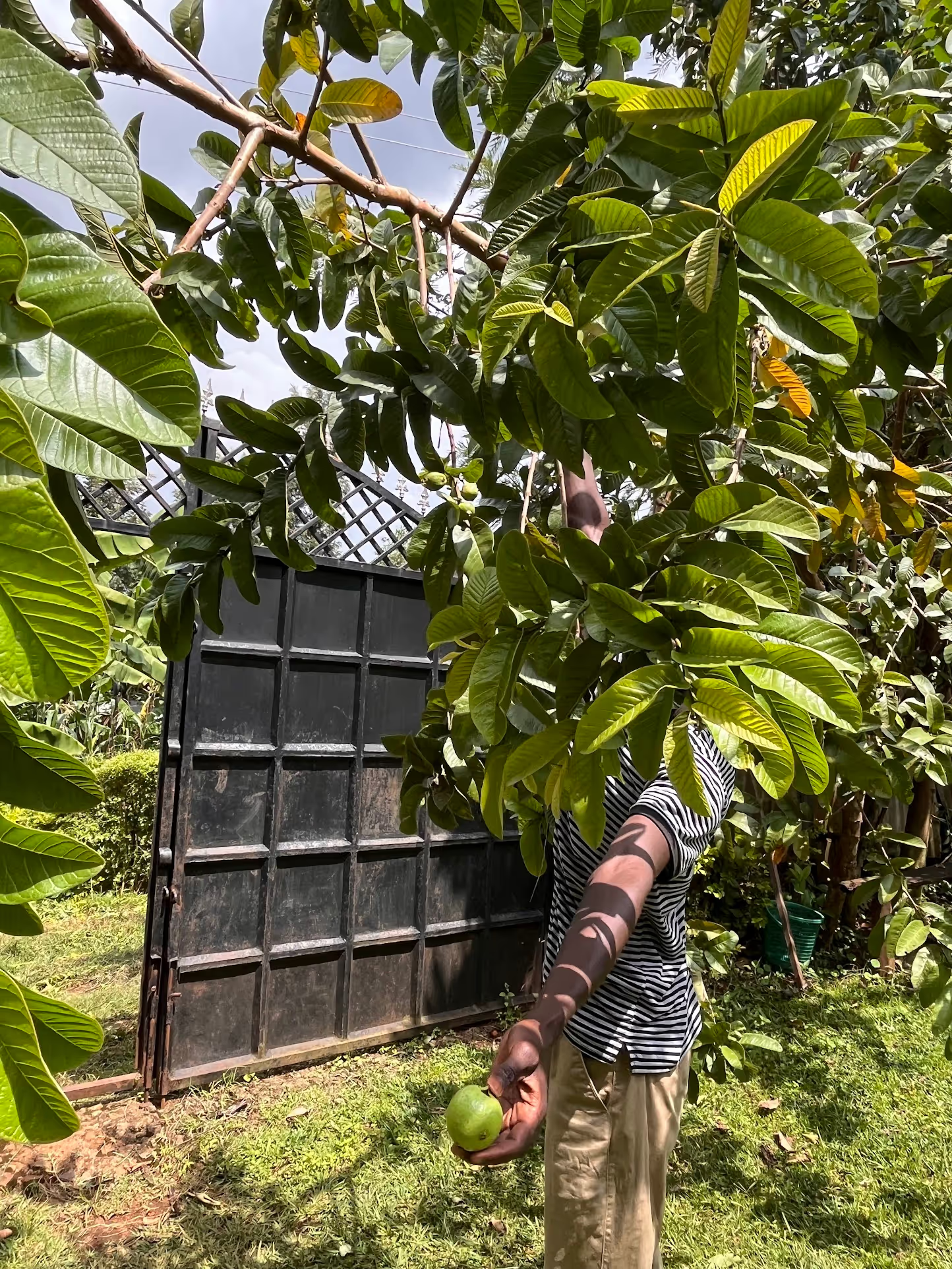
Each morning at the new KIKOP office, relocated just outside the city for better community accessibility, I started my day by stepping onto the terrace. The view was breathtaking. There were rolling hills dotted with lush fruit trees. My mornings were filled with analyzing maternal and child health data of maternal care groups across Matongo, Iranda, and Nyagoto. Every Thursday brought public health classes on sexual and reproductive health taught by county public health officers, engaging teenagers and community members alike.
.avif)
.jpg)
At the end of the day, a neighbor’s friendly calf, who I affectionately named Kahawa, meaning "coffee" in Swahili, greeted us. It quickly became a comforting routine, marking the end of each workday.
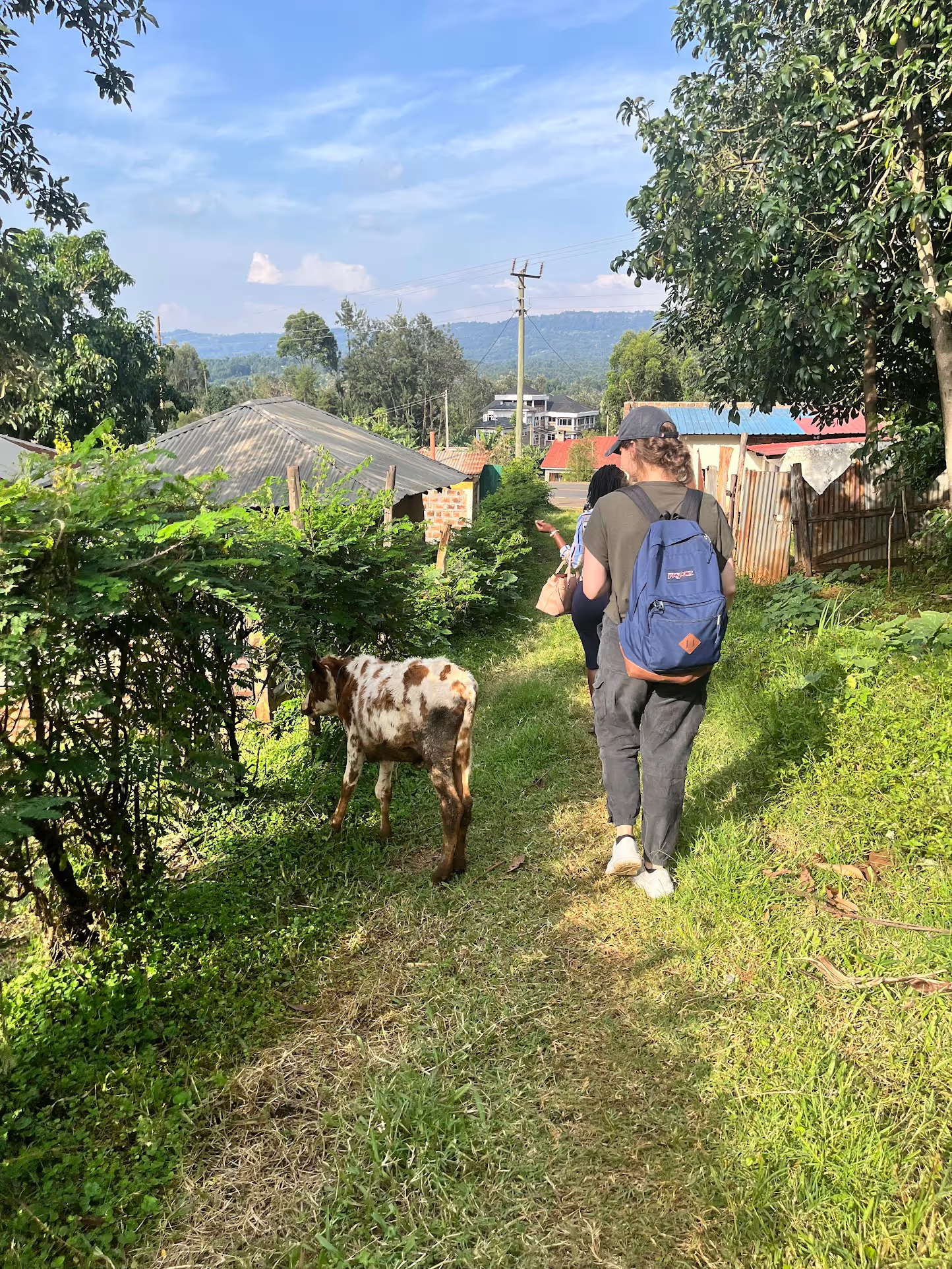
As an intern at KIKOP, my primary role was to monitor maternal and child health data and conduct a process evaluation of KIKOP’s maternal care groups in three catchment areas of Kisii County: Matongo, Iranda and Nyagoto. This role gave me the unique opportunity to engage with community health volunteers (CHVs), health promoters, public health officers and many mothers and their newborns.

A couple times a week, I went on field visits to the community health centers and toured their facilities, including the maternal care units, with delivery rooms, antenatal care wards, and postnatal care wards. These visits gave me valuable insight into the structure and resources supporting maternal and child health in the community. I also met with community health workers and health promoters to learn about the care groups they lead. These groups play a critical role in promoting the health of birthing women by conducting home visits, assessing family health, and teaching best practices for health and hygiene using the curricula developed by the KIKOP team. The Nyagoto Community Birthing Center was one of the locations we visited frequently, engaging closely with neighborhood women and CHVs.
.avif)
During our first visit to the Matongo Health Center, we were warmly welcomed by community health volunteers and promoters who greeted us with singing and dancing, giving us a delightful opportunity to practice our Ekegusii by introducing ourselves. At the health facility, I was introduced to pregnant women, postpartum women and thier families waiting to see nurses and volunteers. A grandmother introduced us to her healthy newborn granddaughter as they waited for vaccinations. She was so proud of how hard everyone in the community was working to keep the newborns and children healthy!
.avif)
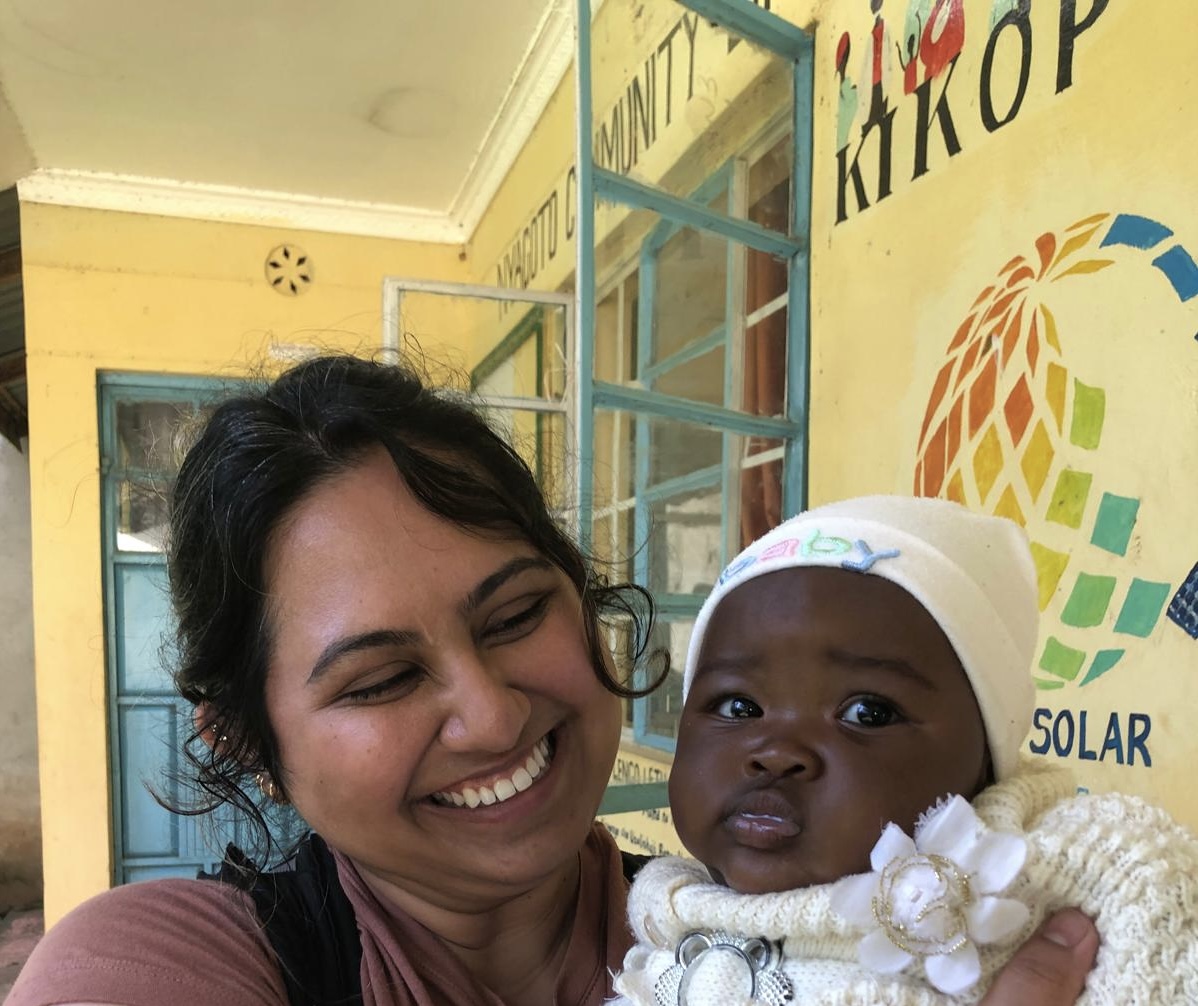
.avif)
Some of the birthing facilities we visited provided separate birthing rooms for women who preferred not to give birth while lying on a bed. All of the antenatal and postnatal care wards in the health facilities we visited were thoughtfully equipped with beds and privacy curtains. We gained detailed knowledge about the equipment and medicine available to ensure healthy deliveries. Additionally, a handbook created by the Ministry of Health provided mothers and families with readily accessible health information, clearly illustrated with pictures and easy-to-understand text. Doctor’s office walls were adorned with vital health information and data from the Ministry of Health, emphasizing immunization rates, breastfeeding practices, and illness prevention.
.avif)

.avif)
.avif)
.avif)
On one warm Thursday afternoon, the program manager announced she had a surprise for us. With curiosity and excitement, we hopped into her car, unaware of what awaited us. Arriving at a nearby school, we stepped out to see approximately 900 students assembled outdoors, eagerly awaiting our arrival. This was a special event, facilitated by the Ministry of Health and KIKOP, focusing on HIV prevention and reproductive health. As I stood there, looking at the sea of young faces attentively waiting, I felt an overwhelming sense of awe and gratitude. I was in complete shock, humbled by the scale of the event and the profound eagerness of the students to learn and engage in discussions about such critical health topics.
The KIKOP team encouraged me and the other interns to introduce ourselves and lead an engaging activity for the students. After the event concluded, numerous students approached us, smiling brightly, to express how much they had enjoyed the fun and memorable experience. I asked a couple of them to tell me what they learned and they excitedly reiterated the day's lesson.
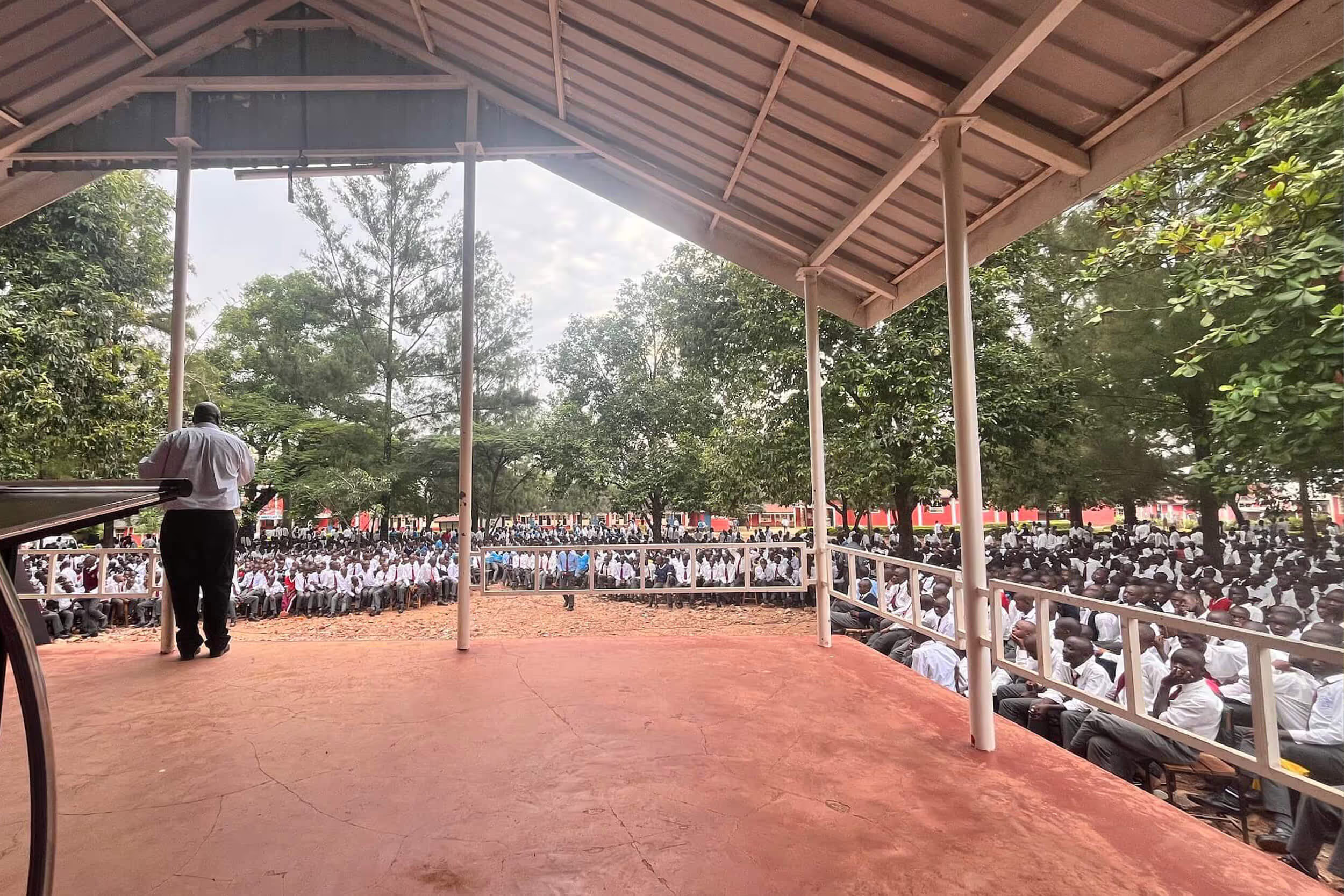
My days often involved visiting local schools alongside KIKOP staff, Ministry of Health officers, and nurses from the AIDS Health Foundation (AHF). Walking into classrooms filled with curious, eager students, we facilitated lessons on mental health, menstrual hygiene, reproductive health, and HIV/AIDS prevention.
Many of the schools we visited had signs painted on their buildings promoting good public health practices. As we walked through each classroom, I gained insights into their daily lessons from the notes written on the chalkboards. Students sat closely together on wooden benches lined neatly in rows. In one school, a library was tucked into a small room at the back, stocked with donated storybooks and workbooks, which children could borrow as needed. One of my favorite memories was being led around a school by a cheerful six-year-old student who proudly held my hand, eager to show me her classroom.
.avif)
.avif)

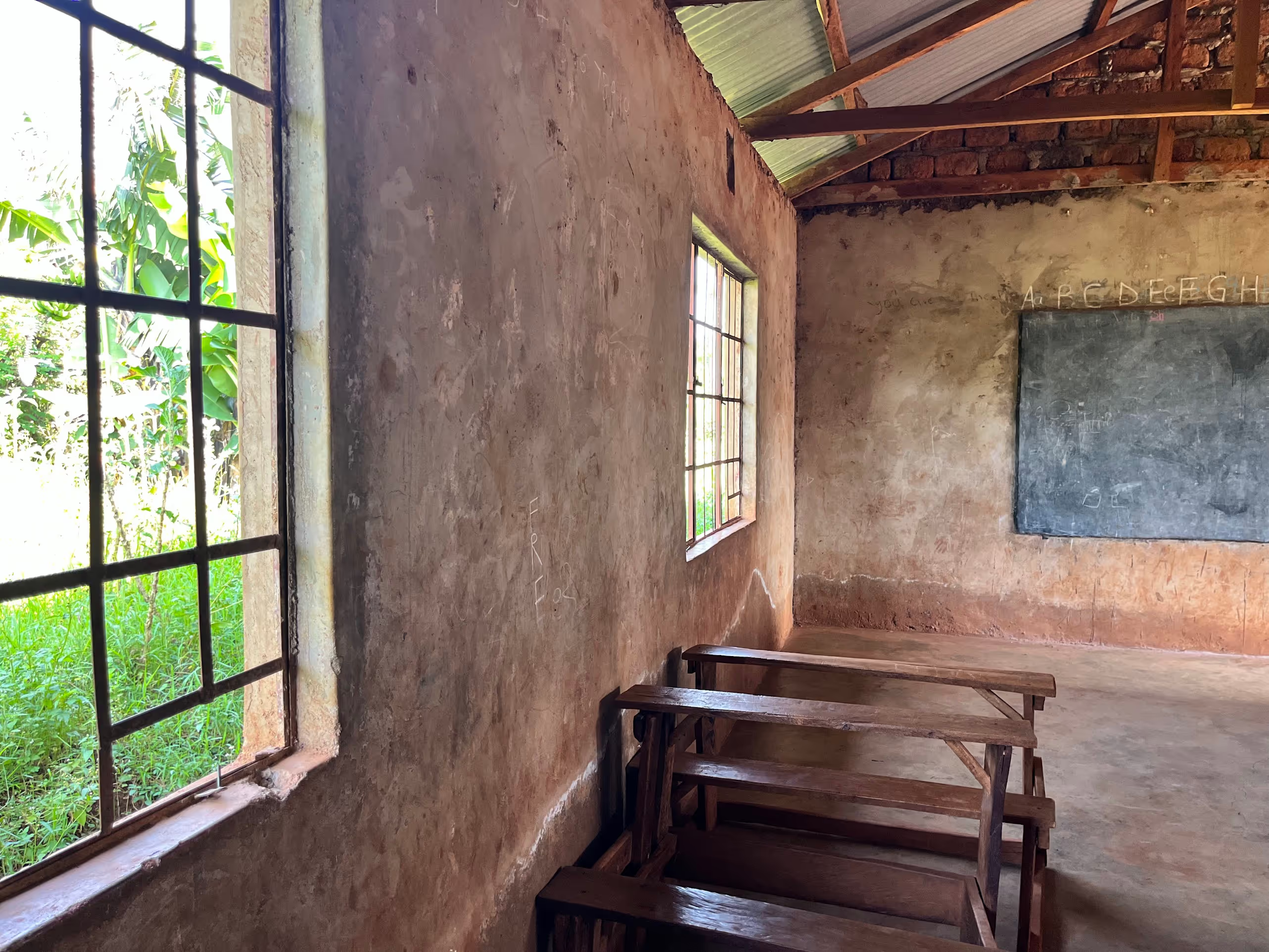
.avif)
.avif)
At lunchtime, some students went home, while others brought beans from home, which the school cook collected and prepared into a communal meal for all. The students all lined up with plates and enjoyed their lunch in the courtyard. After lunch, they all washed their hands and plates before going back to class. We were invited to eat with them-the food was delicious! Throughout these visits, public health officers, staff from AHF, and the KIKOP team consistently encouraged us interns to take initiative and engage actively with students by leading discussions and asking questions. In one fourth grade classroom, I led a lesson on how to put on a menstrual pad. The room was filled with quiet giggles and whispering from students excited about having guests in their classroom. Additionally, several Saturdays each month, we hosted events at the KIKOP office where community members gathered to learn about sexual and reproductive health. At these meetings, staff members provided menstrual hygiene products, further extending support to the community.
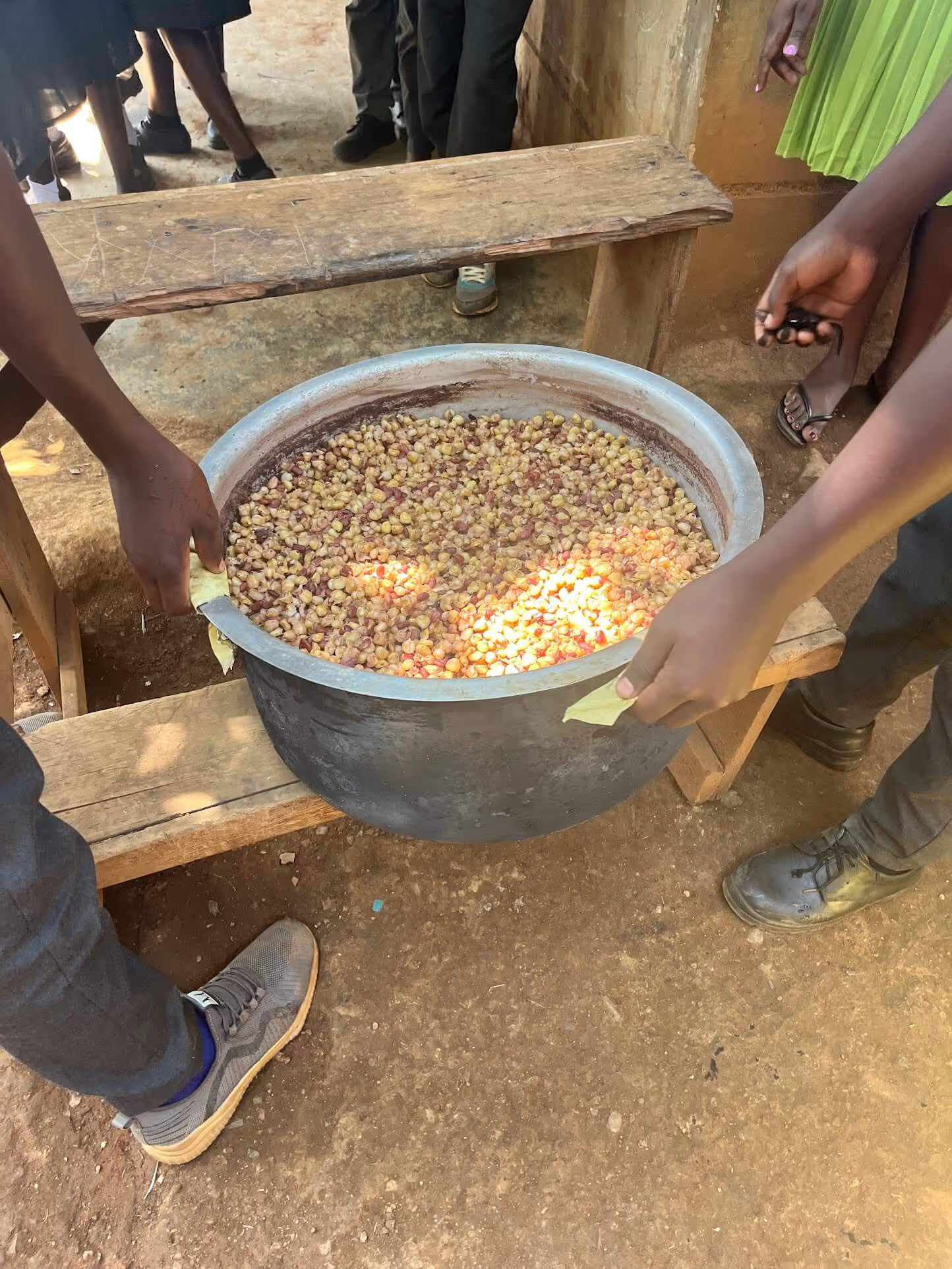
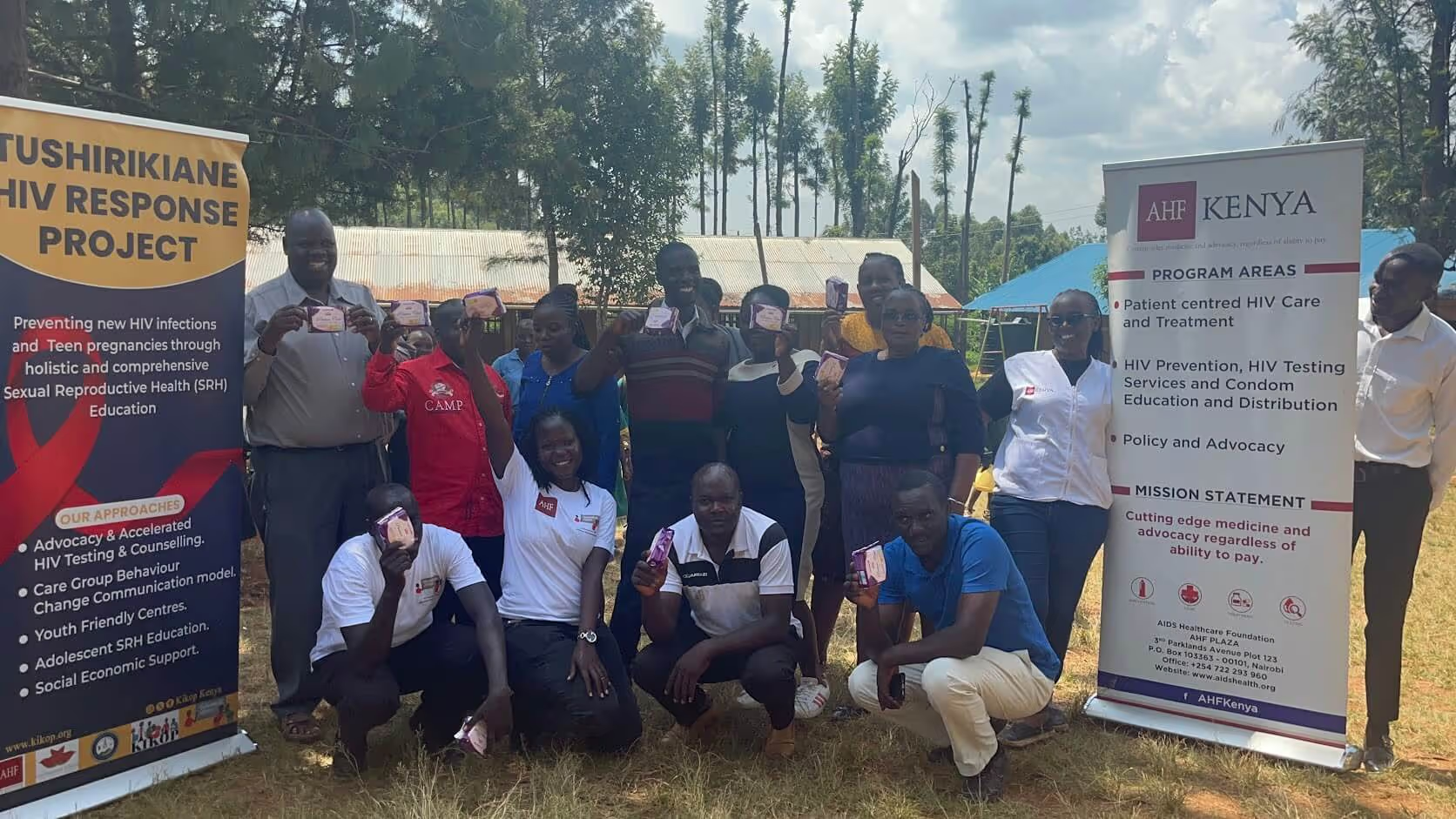
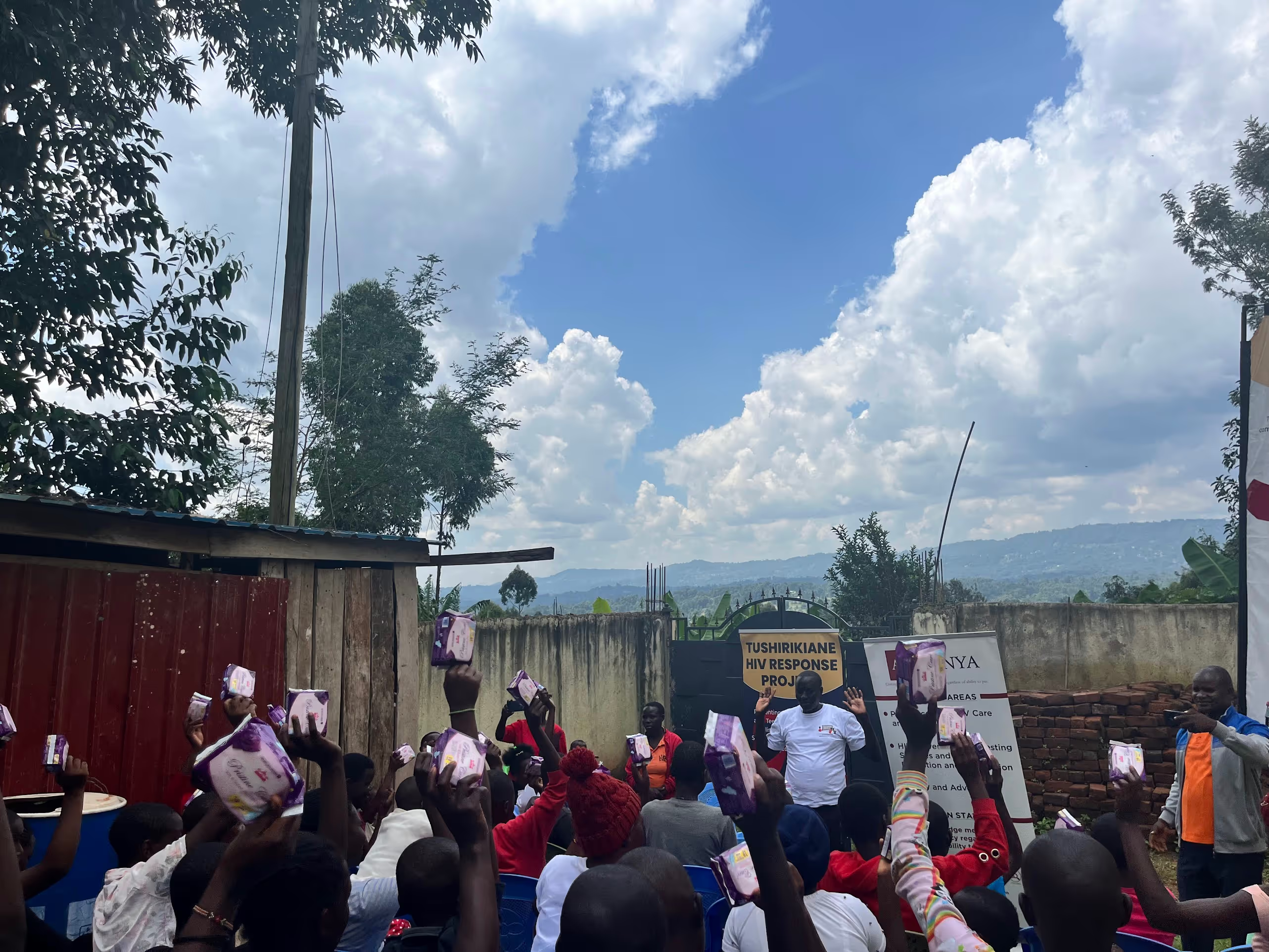
I spent an afternoon with a community health volunteer conducting a home visit of a new mother in the neighborhood.
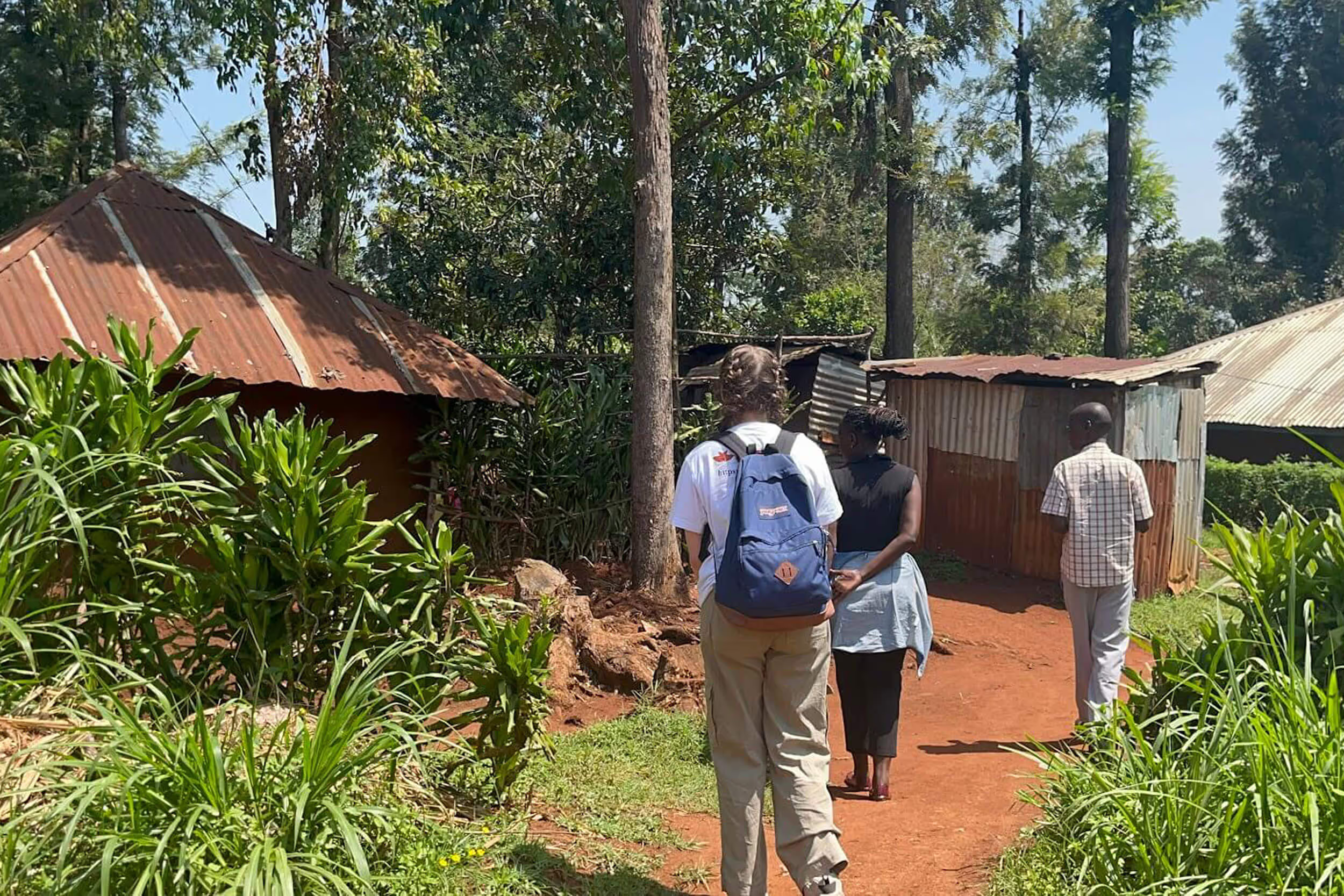
One of the most memorable moments from my summer was joining community health volunteers (CHVs) on home visits, trekking along red-earth paths lined with lush greenery to check on new mothers and their infants. Under the warm Kisii sun, we stepped into homes where volunteers gently but thoroughly went through their checklists, ensuring mothers were applying the health practices taught during care group meetings.
We checked for intact mosquito nets placed securely over beds, safeguarding sleeping babies from mosquitoes that hovered nearby. We carefully observed the surroundings, noting clean, swept courtyards and bedroom floors free from stagnant water where mosquitoes could breed. The CHVs asked about access to clean drinking water, essential for both hygiene and cooking.
In each home we visited, thriving kitchen gardens flourished in vibrant shades of green. Families proudly showed us rows of tall corn stalks growing abundantly, demonstrating the community’s commitment to fresh, homegrown nutrition.
One family warmly welcomed us into their living space, offering a guided tour with shy smiles and gestures. They showed us their outdoor kitchen area, where food simmered slowly over a smoky fire, filling the air with the rich aroma of stewing vegetables. The mother eagerly pointed to old repurposed containers ingeniously fashioned into a makeshift running stream for washing hands.
Traveling through the rolling hills of the county, we also visited springs nestled right outside of neighborhoods. Families gathered there daily, drawing fresh drinking water, chatting as they washed clothes and children laughed playfully while bathing, their voices echoing cheerfully through fields.
These visits were a powerful reminder of how public health education can promote consistent practices which significantly impact the health and well-being of families daily.
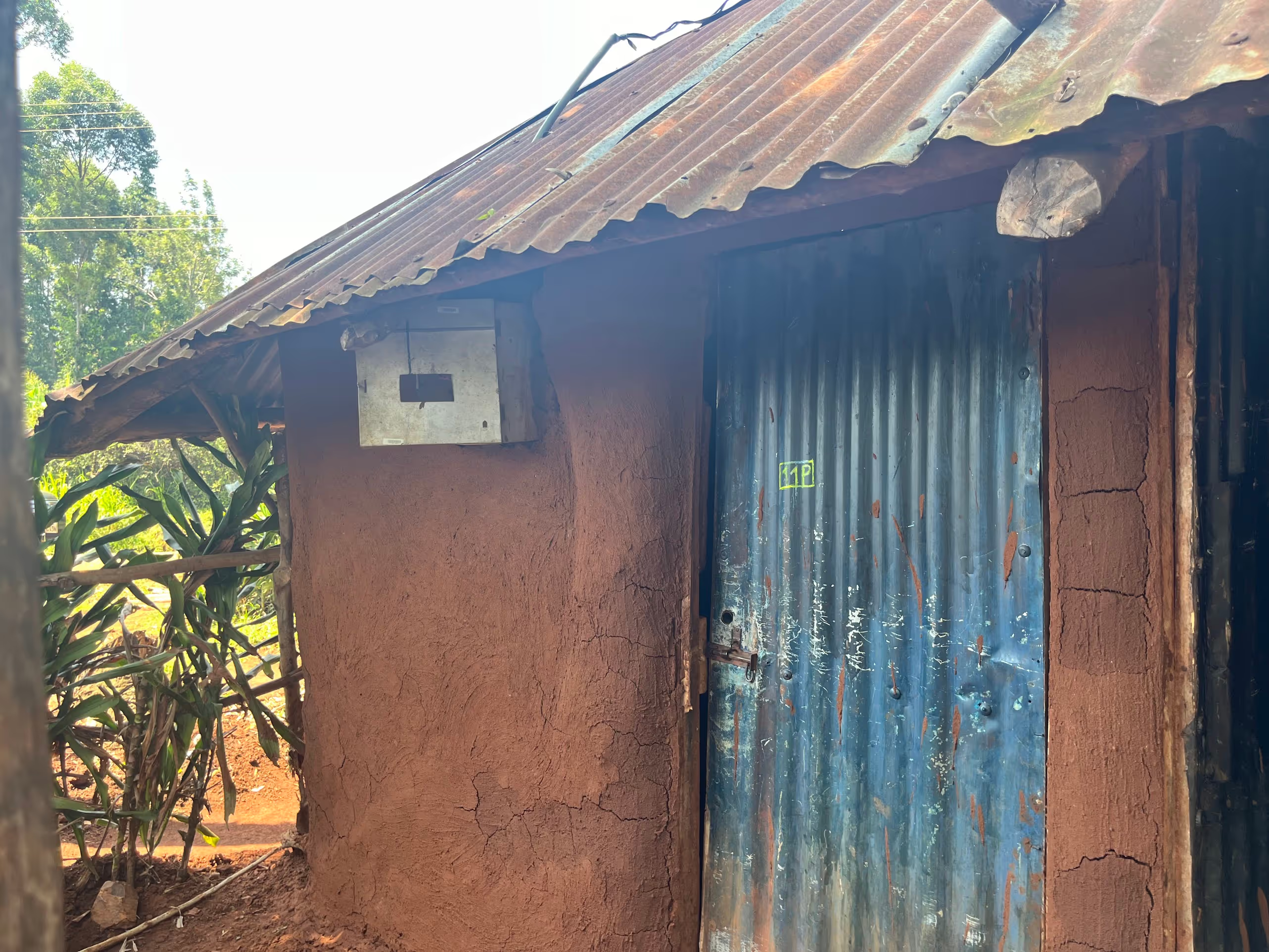
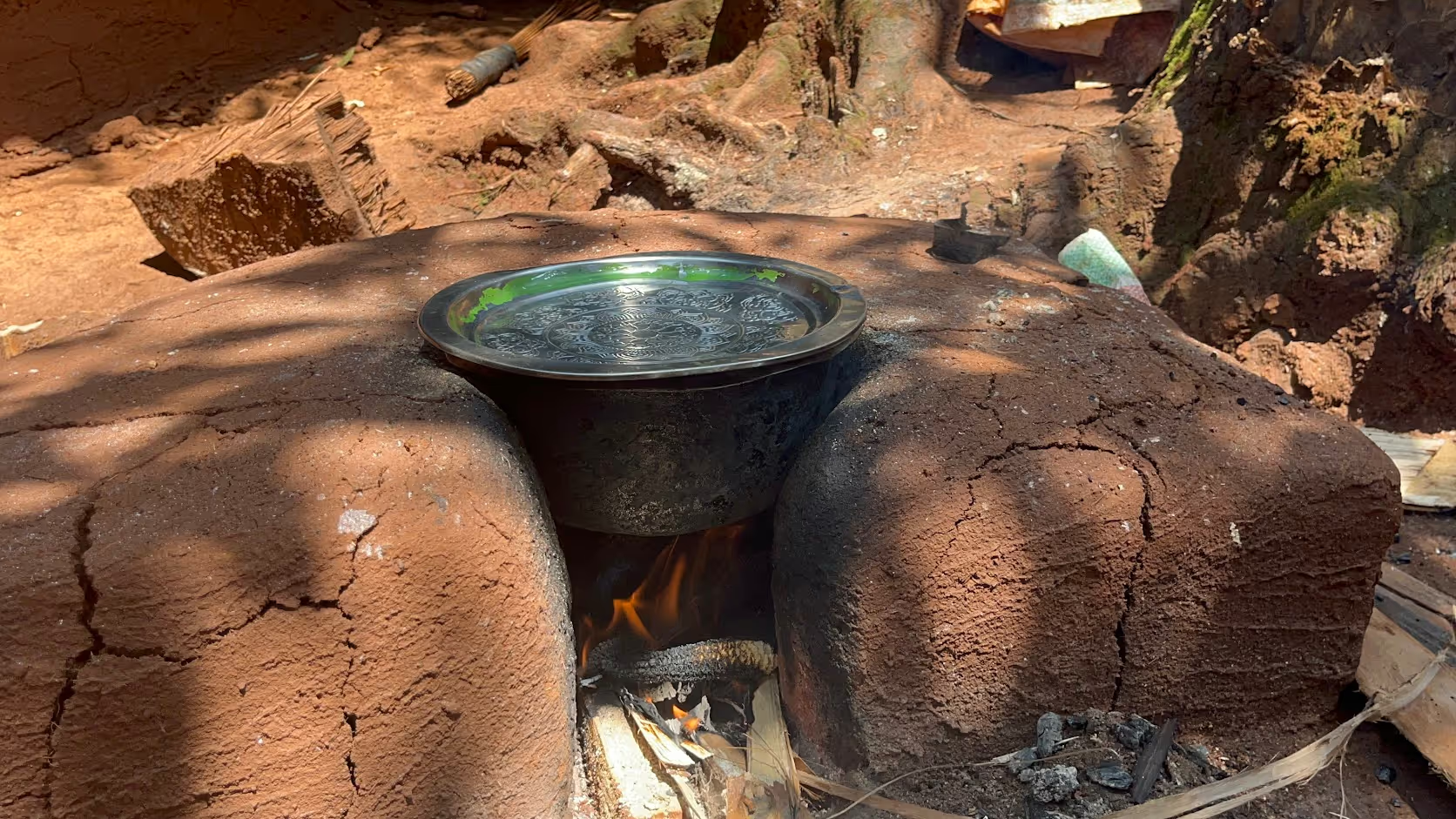


.avif)
Visiting Kenya this summer was an incredible learning experience that went beyond advancing my skills in public health practice and implementation—it taught me the true value of community.
Everyone I met in Kisii was kind and always willing to lend a helping hand. When people say, “it takes a village,” I witnessed firsthand a community that embodied that spirit. They shared the workload seamlessly, ensuring no one in their neighborhood was left behind when it came to education or health.
Despite the challenges that many women faced, they came together, babies in tow, to learn everything they could to create a better future for their children. It was inspiring to see how they not only adopted the lessons from care group meetings but also made it their mission to share this knowledge with women who couldn’t attend. Their resilience and determination were truly unparalleled.
I feel incredibly inspired to have witnessed such unwavering community support and to have played a small role in contributing to their efforts. From reporting on maternal health and mortality progress in Kenya to creating curriculum that women can use for years to come, I was happy to use my education to support this remarkable community. The support they offer each other knows no bounds, and I’m grateful to have formed lasting connections with so many amazing people, so far from home.
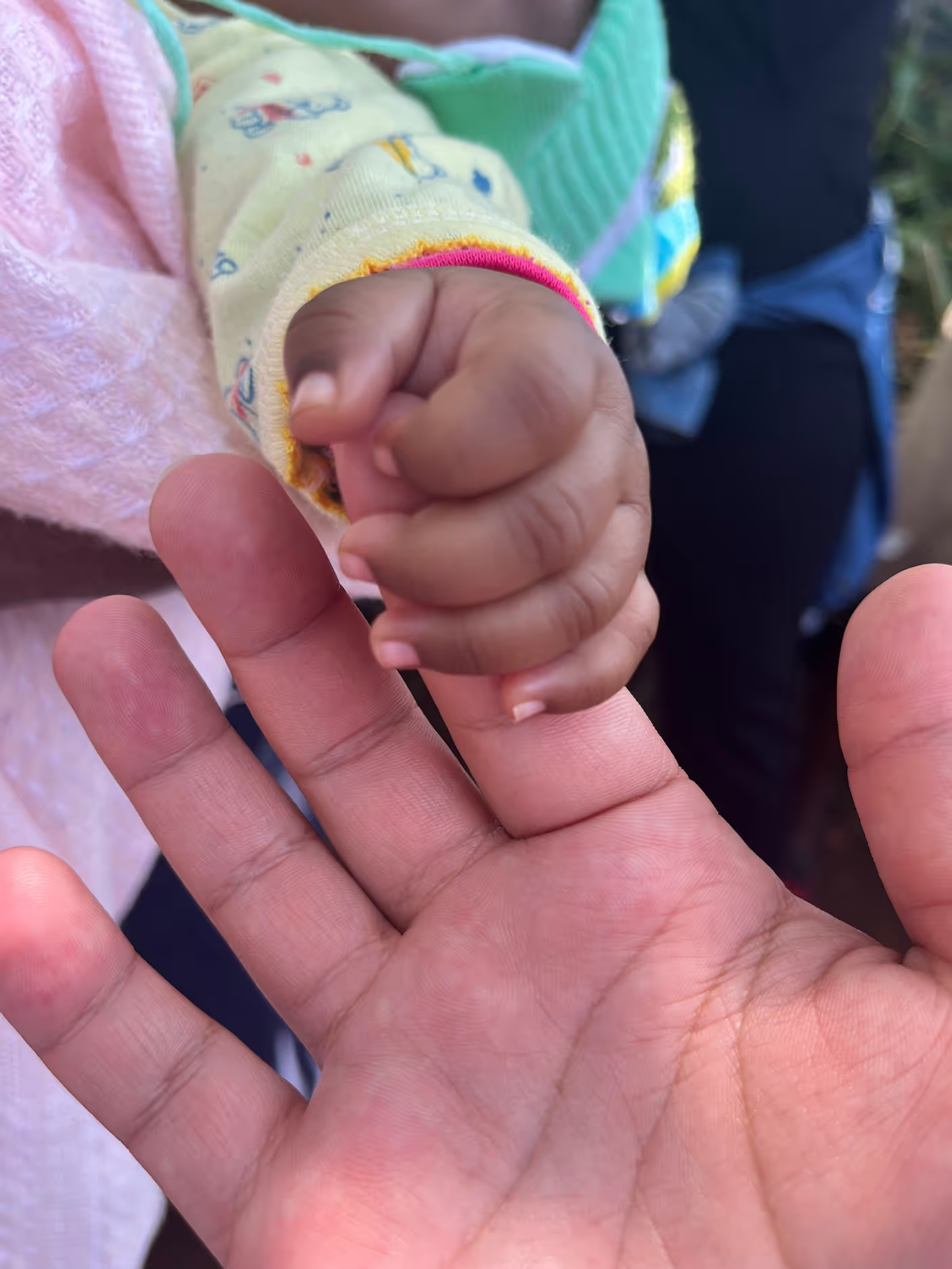
Asante sana, kwa heri!
Thank you very much, bye!
———
Have an idea for another story that would work well as a photo essay? Contact us to give us a heads up at sphcomm@unc.edu.
